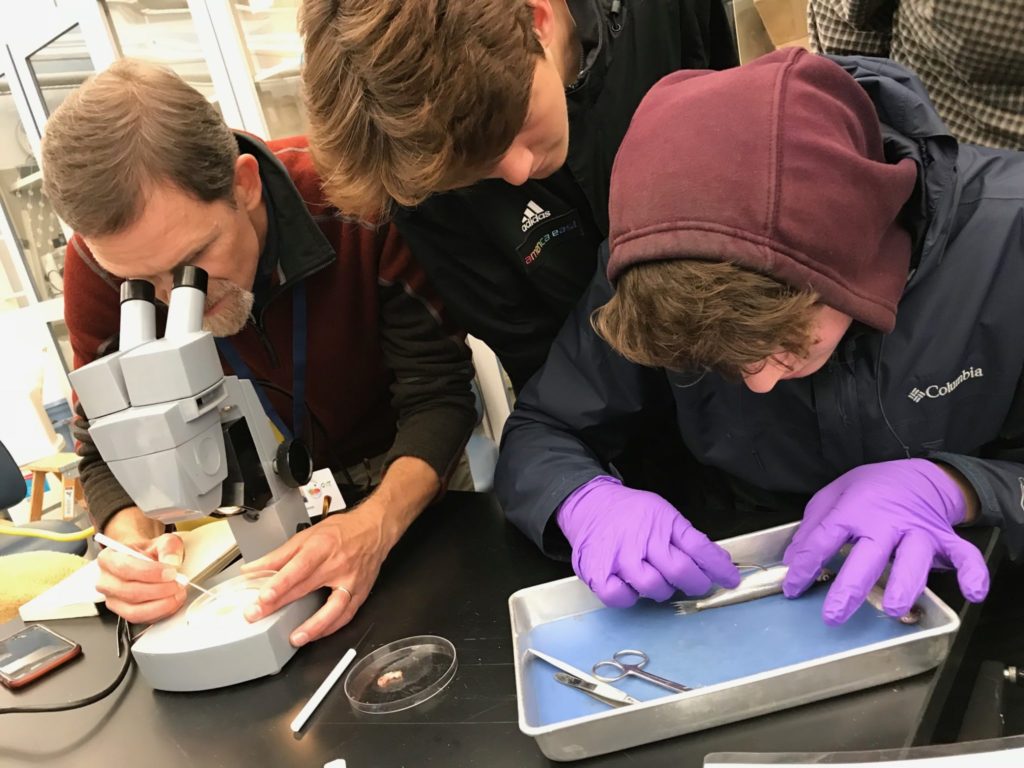The City & Lake Semester

This fall, Burlington High School launched The City & Lake Semester. The program is an immersive experience for 11th and 12th graders where students experience the city of Burlington as both curriculum and classroom. The program grew out of a belief that education doesn’t need to happen within school walls in siloed disciplines, but could take place in our community where most problems, and solutions, are interdisciplinary. Over the course of the semester our students have looked at the city’s history, examined city systems, studied the health of Lake Champlain, and explored our immediate community around our home base at the O.N.E. Community Center on Allen Street in the heart of the Old North End. Currently we are looking at the role of art in our community, working on a public art project with local muralist Mary Lacy.
During our time studying Burlington we have explored the city’s role as a military outpost, a major lumber port, an industrial center, and an innovation hub. We have looked to our past in order to better understand our present, and constantly ask the questions, are we thriving as best we can as a community, and, if not, what can we do to best ensure our future successes, both individually and collectively?
In the course of our journey we have met with many partners in order to better understand who we are and the work we need to do to be better stewards of our land and community. Since the lake has played such an important role in Burlington’s settlement, it made sense to explore our geographic origins and gain a better understanding of how the Champlain Basin came to be before taking a deeper dive into issues facing the lake today.
And so it came that on a perfect fall day in October we met with Burlington city naturalist Alicia Daniel at Rock Point on the shores of the lake. There, in the shadow of the Champlain Thrust Fault, we learned of the geologic history of this place, including the surprising story of how (freshwater) Lake Vermont became the (saltwater) Champlain Sea and then drained out after the last Ice Age to become (freshwater) Lake Champlain some 9,000 years ago. Evidence of the many changes over geologic time were all around us, written into the stones.
Acknowledging that there are some truths that we can learn from hard sciences like geology, there are other truths that require a different way of seeing and experiencing the world. So we continued our exploration of the Champlain Basin with Melody Walker Brook of the El-Nu tribe of Abenaki, whose ancestors were the first (human) people to live in this part of the world. Melody shared her belief that humans are just the youngest people to join the Circle of creation, with so much to learn from older people, including animals, plants and even rocks. Melody told stories from the Abenaki tradition and her own life that touched on the painful discrimination they have faced – and also the resilience and strength of the Abenaki people and the wisdom of their culture that has been here for some 9,000 years. She was particularly skilled at sharing a different worldview in a way that opened up our curiosity. She helped us to see the lake differently than we had before.
In addition to meeting Alicia and Melody, students also got out on the water. First we went sailing and kayaking with the Lake Champlain Sailing Center, spending several hours cruising the lake. Lake Champlain is so central to Burlington’s identity, but we all acknowledged how rarely many of us get to experience it in this way. Later we joined the crew of UVM’s research vessel Melosira for a series of trawls in search of wild born lake trout (which we found). After we came back ashore we were able to dissect the by-catch from the trawl under the guidance of the UVM Extension Watershed Alliance where we looked for microplastics and microfibers, small pieces of broken down plastics and synthetic fibers, in the digestive tracts of smelt (which we also found). We continued to study microplastics and microfibers with the Rozalia Project, a locally based organization dedicated to the problem of marine debris who led us in some eye- opening fieldwork on our shoreline around plastic pollution. Getting in touch with the lake in this way, learning about its natural and cultural history, participating in research through UVM and The Watershed Alliance, and literally getting our hands dirty with the Rozalia project has allowed our students to connect to the lake in a deliberate and meaningful way, something many of them admittedly had not done before.

This is but a small glimpse at the work we have been doing this past semester, getting students out of the classroom, in the city, and on the lake. If you are interested in our other work from past semester or what we will be up to in the future, please check out our blog at www.btvcityandlake/blog/.
Written by Peter McConville and Andy Barker
Photos courtesy of the City & Lake Program

